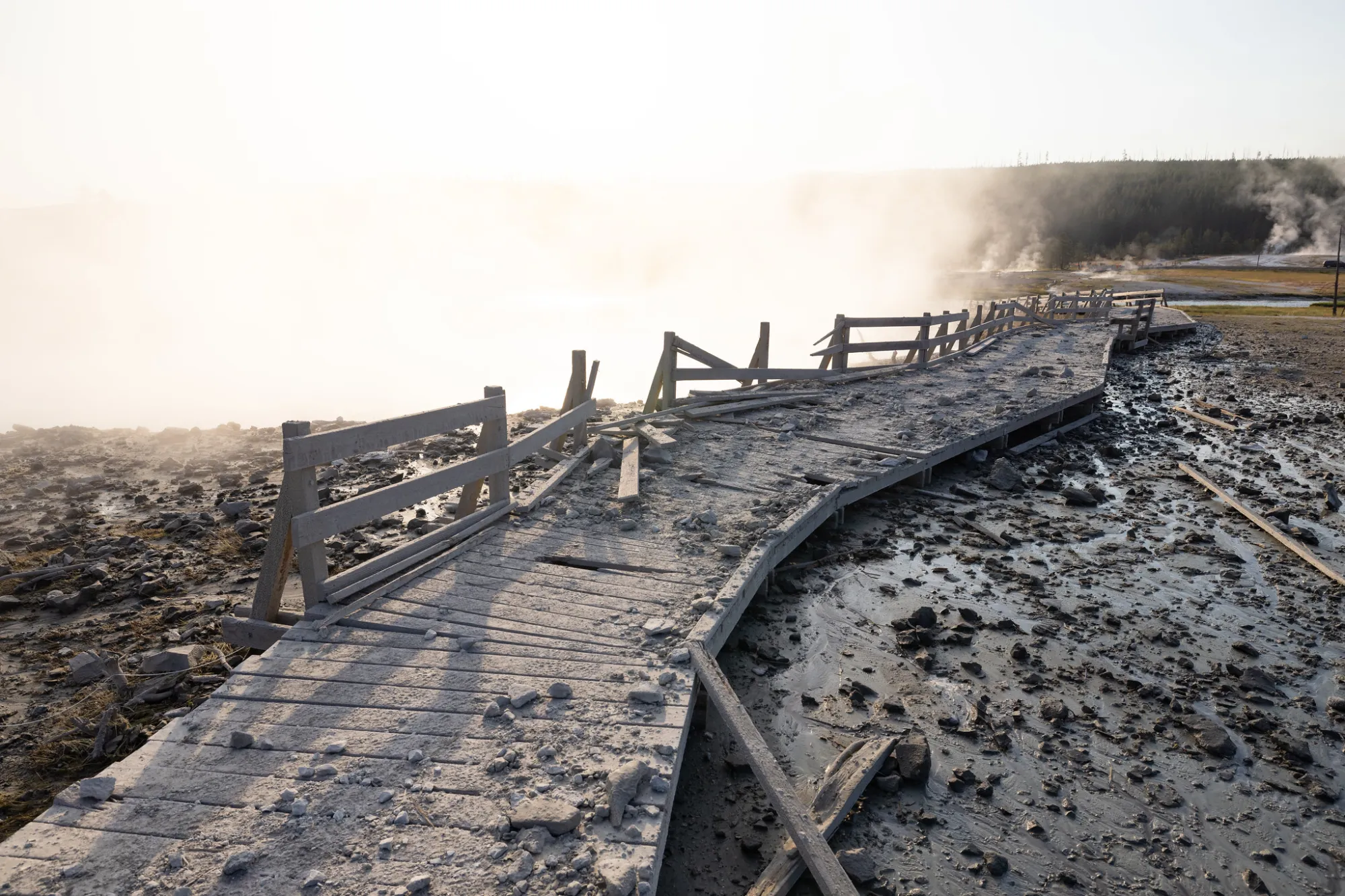“RUN!” Biscuit Basin and Hydrothermal Explosions

Header image courtesy of NPS/Jacob W. Frank
Last week, Yellowstone National Park made headlines yet again. From notable news outlets to your TikTok For-You page, a real-time video filmed by a passing observer spread around the globe, engaging the curiosity of all who watched it.
On Tuesday, July 23, Biscuit Basin—an isolated thermal area considered part of the Upper Geyser Basin three miles north of Old Faithful—experienced a dramatic and unpredictable hydrothermal explosion. Visitors captured dramatic footage of hot water, mud, large rocks, and steam shooting more than 500 feet in the air in the area immediately around Black Diamond Pool.
https://www.youtube.com/watch?v=VjhJF9EtZEk
A hydrothermal explosion is a dramatic geological event caused by the rapid release of superheated steam and gas from underground hydrothermal systems. Yellowstone National Park sits atop one of the world’s largest active volcanoes fueled by a magma chamber as close as two miles below the surface! Each summer, millions of visitors enjoy the awe-inspiring beauty of the Yellowstone volcano expressed on the surface in the form of geysers, hot springs, mud pots, and fumaroles. As volcanically heated groundwater turns to steam and builds up immense pressure, the pressure exceeds the strength of the overlying rock, resulting in a violent eruption. Hydrothermal eruptions can eject steam, gas, rocks, and other debris. One rock found in the remains of the Biscuit Basin blast was the size of a refrigerator! No injuries have been reported as a result of the explosion.
Hydrothermal explosions are not uncommon in Yellowstone National Park. Such events have shaped the landscape of Yellowstone over millennia. On average, Yellowstone experiences 1-2, sometimes three explosions yearly, most often away from crowds in backcountry thermal basins. However, visitors have documented several similar explosions in more visible basins. In September 1989, Porkchop Geyser located in Norris Geyser basin exploded, shooting ejecta as high as 200′ in the air. Excelsior Geyser, found in Midway Geyser Basin, experienced violent eruptions in the 1880s and early 1890s, reportedly exceeding 300 feet in height and width. The world’s largest hydrothermal explosion crater resides in Yellowstone. Mary Bay, along the East Entrance road, measures 1.5 miles wide and was created by a hydrothermal explosion ~13,800 years ago. This bay is now an extension of Yellowstone Lake (with warmer water!) and is an excellent area to observe waterfowl and the occasional grizzly bear.
Though relatively rare, the event at Biscuit Basin on July 23, 2024, serves as a powerful reminder of the incredible forces that have shaped—and continue to shape—the Yellowstone National Park that visitors are fortunate to experience today.
Blog text provided by YW Naturalist Guide Leysa K.

To learn more about Leysa, and the entire Yellowstone Wild Team visit our “About Us” page.


